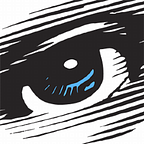Lost River (2014, Dir. Ryan Gosling)
Synopsis:
The small town of Lost River is dying. Buildings are deserted and being torn down. Young mother of two boys, Billy (Christina Hendricks) tries to extend the mortgage on her family’s home, but new bank manager Dave (Ben Mendelsohn) suggests she get a job in a strange club where violent and gory acts are staged for an enthusiastic audience. Her older son Bones, (Iain De Caestecker) scrapes a meager living stripping copper out of deserted buildings, which angers local psycho Bully (Matt Smith) who sees the deserted buildings as his own private kingdom. Bones falls for his neighbour, Rat (Saoirse Ronan), who looks after her grandmother (Barbara Steele) who has never recovered from the town’s relocation after it’s original site was flooded to make the reservoir. Rat thinks that that act has cursed Lost River and something needs to be done to break the spell. But will they manage to find a way out before Bully catches up with Bones.
Lost River is a film I had an idea of long before I actually saw it. I’d fallen in love with the soundtrack by Johnny Jewel and, as is often the case when I hear the soundtrack before I see the movie, had already begin to imagine a series of images in response to be music…
There’s a reason for this: I’d discovered Jewel’s music (or at least some of his production work) in the songs used in the film Drive. Only later did I discover that Jewel, who was a friend of that film’s star: Ryan Gosling, had originally created the entire score for Drive only to have it rejected and replaced by the now familiar underscore by Cliff Martinez. All that remained in the finished movie was the various songs Jewel and under his various collaborations: Desire and The Chromatics had produced. Whilst I love Cliff Martinez’s score work, it was Jewel’s songs that were really the heart of that movie’s soundtrack for me; so I was excited to discover that Jewel had released the unused score, under the pseudonym Symmetry, as Themes from an Imaginary Film. I bought it immediately and loved it and in the process heard that Jewel would be scoring Gosling’s directorial debut. When the soundtrack for that was eventually released in 2015 I bought that too, but even after the film was released on DVD I held back from watching it, scared that it might not live up to the images I’d seen in my head whilst listening to the music.
Fast forward to me watching the film: I was a little surprised at the film’s opening credits which featured a piece of old fashioned music, “Deep Purple” over a naturalistic opening that feels more in common with the work of Jim Jarmusch, than Drive director and Gosling collaborator Nicholas Winding Refn. The stylized feel of the film that I had expected kicks in with the first of Jewel’s soundtrack cues over the montage of Bones scraping a living, salvaging copper from decaying houses. A different soundtrack or no soundtrack at all would make it feel like a documentary, but Jewel’s music immediately changes it into something strange and alien as befits a film which features sunken towns and deserted buildings overgrown with vegetation and a night club with a gargoyle entrance, that feels it’s been lifted straight out of an Argento movie. A testament to the power of a great score…
It’s more than just great — it’s actually integral to the movie. Music echoes throughout the film, like the melody played by Saorise Ronan’s character on the keyboard in her purple neon lit bedroom that drifts across to Bones’ house.
But the film is more than simply an exercise in style with a great soundtrack. The performances of every member of the cast are superb, though special mention must go to ex-Doctor Who Matt Smith’s mesmerizing and menacing performance as the psychotically evil town villain, Bully and Ben Mendelsohn (soon to become much better known as he’s playing a villain in the new Star Wars movie, Rogue One) as the creepy bank manager/club owner with designs on Bones’ mum.
The cinematography by Benoit Debie is outstanding, going from the natural light, documentary style shots of the opening to the highly saturated colours and a dreamlike compositions of the rooms under the club and Bones’ nighttime swim in the Lost River. The exquisite framing of the shots of the burning house or the canted shot as Billy runs from the club are is perfectly composed as anything in a Kubrick movie.
If there’s a fault to the film it’s that at times it feels like there are too many ideas to fit into one single film. It’s the sort of narrative that would work well in a novel, for example, where the multiple strands and the strangeness of some of the story elements would probably seem less jarring…
I’m quite sure it’s critics began judging it harshly, long before they saw it, as the pretentious vanity project of a well-known actor. ‘Pretentious’ is a hard term for this film to shake off — it is “pretentious” in many ways, though in his case that’s no necessarily a bad thing and if it is the victim, at times, of it’s own ambition then certainly it’s never dull.
Regardless of how well you feel the whole movie hangs together, there’s no denying the incredible power of the work here. The film is truly unclassifiable. The best description I can manage is if David Lynch directed an American version of Jim Cartwright’s Road, it might resemble something like this. I urge to see it, because even if you eventually end up regarding it as a beautiful mess, it will stay with and haunt you for days afterwards in the way that only great movies do.
